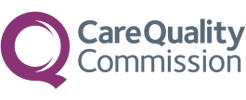A composite (tooth coloured) filling is used to repair a tooth that is affected by decay, cracks, fractures, etc. The decayed or affected portion of the tooth will be removed and then filled with a composite filling.
There are many types of filling materials available, each with their own advantages and disadvantages. You and your dentist can discuss the best options for restoring your teeth. Composite fillings, along with silver amalgam fillings, are the most widely used today. Because composite fillings are tooth coloured, they can be closely matched to the colour of existing teeth, and are more aesthetically suited for use in front teeth or the more visible areas of the teeth.
As with most dental restorations, composite fillings are not permanent and may someday have to be replaced. They are very durable and will last many years, giving you a long-lasting, beautiful smile.
Reasons for composite fillings:
-
Chipped teeth
-
Closing space between two teeth
-
Cracked or broken teeth
-
Decayed teeth
-
Worn teeth
How are composite fillings placed?
It is normal to experience sensitivity to hot and cold when composite fillings are first placed, however, this will subside shortly after your tooth acclimates to the new filling.
You will be given care instructions at the conclusion of your treatment. Good oral hygiene practices, eating habits, and regular dental visits will aid in the life of your new fillings.
If you have any questions or concerns about composite fillings, please contact our practice.







